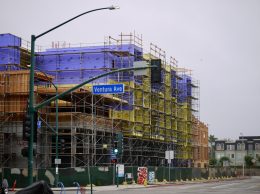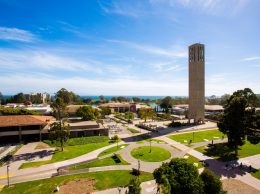Opinion: To fix the region’s housing shortages, look to parking and racism
By Roy Prince
Are we going to make the hard policy choices to create more housing, or will we continue to allow systemic racism, stodgy planning policy, and outdated zoning to kill sorely needed housing options for our communities?
What are the root causes of housing and homelessness in our community, and more importantly, what are concrete solutions that will solve the larger housing and homeless problems?
Certainly “housing first” is an excellent policy step in the right direction for our homeless family members, our homeless friends, and our homeless neighbors.
A change to zoning that would incentivize more Oxnard housing options would be to allow more dwellings on each property. Say duplexes or more multi-family housing on all lots in the city. This change would not require more density, but would allow more density, should the property owner choose to upgrade the property.
After years of no housing activity in downtown Oxnard there are now more than half a dozen multi-story mixed-use housing projects in the planning pipeline.
There is a reason for this recent activity—in late 2019 the Oxnard City Council passed a new zoning code for the Central Business District. The key element that created this landslide of new housing was the reduction of excessive parking requirements. This is the kind of leadership and policy change that will bring more housing to Oxnard.
Excessive parking requirements and outdated zoning codes have killed the development of housing locally and nationwide for decades. Systemic racism and excessive parking requirements have killed housing development in Ventura County.
The clear, if not mentioned in polite company, resolution to more local housing is the end of systemic racism in general, and the end of systemic racism in our local land-use policy and zoning. That means in addition to reducing excessive parking requirements for new housing development citywide, there needs to be changes to single-family neighborhood zoning.
Let’s look at some of the voices regarding the housing development issue:
Property owners/renters: “We do not want more housing because it will make traffic and parking problems in our neighborhood worse!”
Developers: “We cannot build more housing because zoning requires so much parking that we cannot obtain a reasonable return on investment!”
Property owners/renters: “We must have cars because public transportation is so poor.”
Cities: “Single-family zoning is the easiest for cities to administrate.” Yet… “Single-family zoning density does not bring in enough property tax revenue to fund our civic needs, let alone public transportation.” “More single family zoning requires ever-more costly infrastructure maintenance further and further away from the civic center.”
The architect, developer and urbanist R. John Anderson recently wrote on Facebook: “We are in the habit of spreading our civilization so thinly on the land that we have a hard time producing the property taxes needed to repave the roads and repair the sewer systems, let alone find money for cops, firefighters, teachers, and librarians.”
And public transportation comes last. See the problem?
The perception in the neighborhoods is that more housing will make already difficult traffic and parking worse. To build more housing developers need to eliminate parking for several reasons. Parking is costly, but even more of a problem is that excessive parking requirements reduce the amount of housing on a parcel and thus make a reasonable return on investment impossible.
Cities allow more single-family housing because it’s what cities have always done. Change is hard.
There is a solution: The right kind of housing in the right place. Housing in downtown cores and along transit-rich main street corridors eliminates many of the above problems.
Our work is to encourage substantive change in zoning and housing policy at the county and city levels, to end excessive parking requirements and systemic racism in housing policy.
Housing policy decisions are made and created by county supervisors and city council members. If we want more local housing, to house the homeless as well as the rest of us, we must encourage our city and county elected officials to exhibit leadership by developing housing policy that incentives more affordable and market-rate housing.
Changing the zoning code to allow mixed-use multi-story housing along Oxnard Boulevard and Saviers Road will incentivize housing development along Oxnard’s main north-south corridor. In addition to incentivizing more housing, this will encourage public transportation and reduce both traffic and parking problems citywide.
It’s our job to encourage Oxnard City Council members to lead with land use policy changes that will bring more housing to Oxnard and Ventura County.
• Roy Prince is an architect and urbanist in Oxnard.











